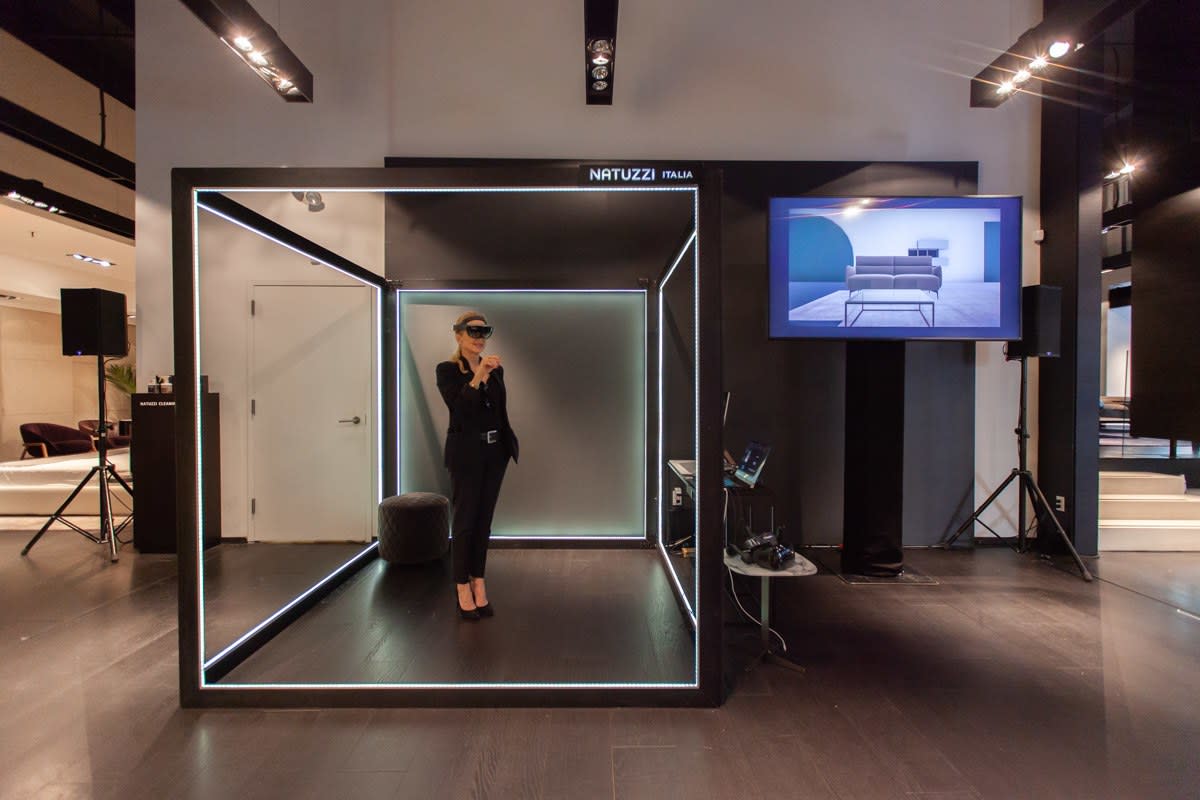Natuzzi and Microsoft Team Up on New VR Technology

Italian furniture maker Natuzzi has tapped tech companies Microsoft and Hevolus Innovation for a new project: a virtual reality technology that lets users simulate interior or exterior spaces and create designs with actual product. This virtual and augmented reality program, launching this week at the brand’s NoMad showroom, blends holographic display, advanced 3D modeling, and an interactive product configurator with existing retail techniques, and the result is nothing short of innovative. “The HoloLens, Microsoft Dynamics 365, mixed-reality system—these give us an incredible opportunity to showcase our collection without boundaries, lower the stock and inventory at our stores, minimize the space and architectural investments required to set up a location, and dramatically increase our sales,” Natuzzi’s creative director Pasquale Junior Natuzzi tells AD PRO.
By wearing mixed-reality headsets, like Microsoft HoloLens, the visitor inserts themselves into an interior with access to an endless supply of the brand’s offerings. Users gain the ability to move around a project—either their own design that's been rendered in the technology, or one chosen from existing templates—and see the furnishings from every point of view. “For Natuzzi, collaborative visualization is an area with a lot to mine,” says Terry Farrell, Microsoft's director of product marketing in mixed reality. “The idea of visualizing a room layout before building physical models I think is the foundation for a lot of the great work that the brand is doing with this new platform.” Customers can "enter" the rooms themselves, select merchandise, and then make changes to colors, finishes, and materials to find the best design solutions for their space. The holographic technology shows a scaled 3D model of the room at hand. Before leaving, customers are emailed a 360-degree rendering that they can look at on their phones and share.
Most of all, Farrell says this technology and program will create efficiencies for brands like Natuzzi. “Where we’re going next—and where we think the industry is going—is really breaking free of screens," says Farrell. "How can we take the physical and digital worlds and blend them together?” This merging is poised to be particularly useful for both designers and the brands that serve them. Natuzzi, the young talent at the creative helm of the family-owned brand, sees infinite potential. “We’re looking to expand into downtown areas where spaces are typically too small to accommodate our classic store format,” he says. “With HoloLens 2 and mixed reality, we can have a very small space—or eventually, a store without products altogether. Less inventory. Less back-and-forth of floor samples. Fewer people moving goods. In fact, the concept of store clearance would all but disappear, since your inventory’s going to be virtual.” This game-changing idea may catch on especially well in New York, where showroom rents are always skyrocketing.
Originally Appeared on Architectural Digest

